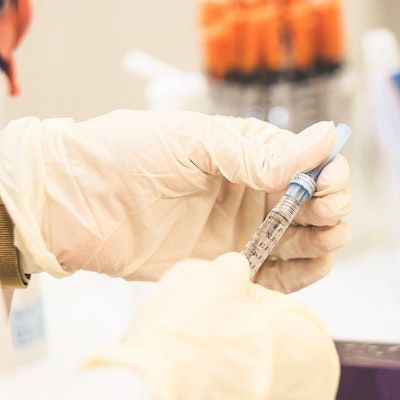Pharmacist-Led Flu Shot Screening Leads to Improved Community Immunization
A concerted effort to increase flu vaccination during the COVID-19 pandemic resulted in more protection among a high-risk population, as well as educational opportunities for pharmacy students.

Research from a North Carolina clinic show strategies to target low-income, government assistance-ineligible community members results in increased influenza (flu) vaccination and, as a result, reduced risk of comorbid health conditions.
Data from a prospective study conducted by a team at High Point University, and presented at the Making A Difference in Infectious Disease (MAD-ID) 2021 Annual Meeting this week, showed that a screening- and education-based program to increase community clinic influenza among a population of predominately people of color increased the rate of flu-vaccinated persons from the previous year by nearly 50%.
Presented by PharmD candidate Jymon Clark, the research also gauged the benefit of pharmacy school student engagement in real-world flu vaccination education and administration.
Clark and colleagues conducted the assessment at the Community Clinic of High Point in North Carolina, where patients generally at a detriment to healthcare access and literature are often treated. As investigators noted, the clinic is often the only means by which community members can access a free flu shot—a vital resource in the high-risk population.
“Influenza is responsible for millions of illnesses and thousands of hospitalizations and deaths each year,” investigators wrote. “People with underlying medical conditions and those with low-income status have disproportionately poor outcomes from respiratory illnesses.”
What’s more, the same patients are at a greater risk of COVID-19, leading to the conceptualization of the study which aimed to boost influenza immunity during the pandemic.
Patients were screening for vaccination eligibility and evaluated for comorbidities during this flu season. Demographic information, relevant comorbidities, and patients’ vaccination status from the previous flu season were collected by pharmacists and students.
Clark and colleagues additionally evaluated pharmacy student experience during the assessment through a Likert 1-5 scale survey (1 being least confident; 5 being most confident) on vaccine competence and knowledge. They compared the scores against those from students who had not participated in the program.
Their trial included 367 patients who received flu vaccines. Of them, 147 (40%) presented with relevant comorbid health conditions.
One-third (32%) of patients identified as Latinx, and 75 (20%) identified as Black. Nearly half (48%) of patients had not received a flu vaccine the year before, with the most frequently reported reasons being limited availability (28%) and high costs (25%).
The 23 students to participate in the program and answer the survey reported a mean 4.78 score in vaccine knowledge confidence and 4.65 score in ability to screen patients for vaccination, versus 4.28 (P = .003) and 4.25 (P = .025) mean scores from 43 non-participating students, respectively
Investigators concluded the concerted effort to increase flu vaccination among an at-risk community during the COVID-19 pandemic had multiple benefits.
“Targeting underserved patients in their communities increases vaccine uptake and prevents complications more common among this population,” they wrote. “Students also benefit from the experience of administrating clinic activities and actively vaccinating patients.”
